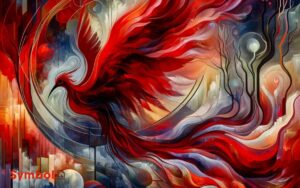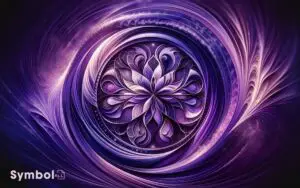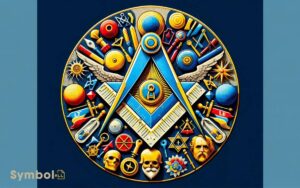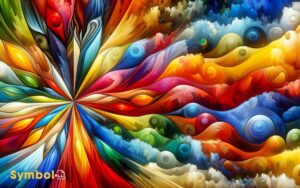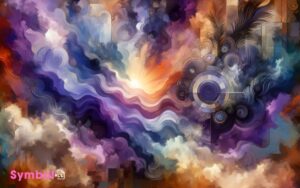Understanding What Does the Color Purple Symbolize? A Guide!
When you consider the color purple, you’re tapping into a centuries-old symbol of wealth, power, and exclusivity.
Historically, only the elite could afford it, thanks to the laborious process of extracting dye from the murex snail. It signifies not just social hierarchy but also creativity, mystery, and spirituality.
Purple’s rarity in nature adds to its allure, sparking a sense of intrigue and wisdom that’s both profound and mystical.
As a symbol, it bridges the material with the spiritual, urging a deeper understanding beyond the visible.
Unpacking its layers, you’ll uncover a spectrum of meanings that extend far beyond its initial luxury status.
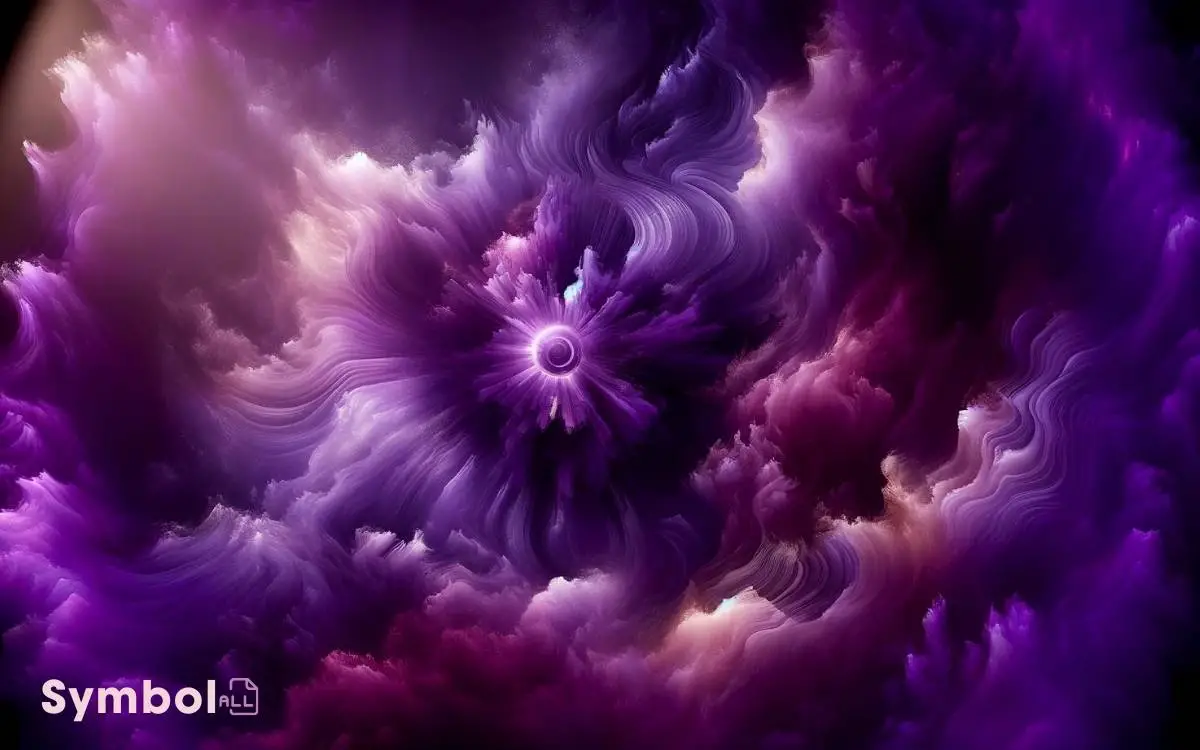
Key Takeaway
Historical Significance of Purple
Throughout history, purple has held a profound significance, symbolizing wealth, power, and rarity, as its acquisition was once a luxury afforded only by the elite.
You see, obtaining purple dye was an incredibly arduous process, primarily sourced from the murex snail in ancient times.
This painstaking task, coupled with the sheer number of snails required for even a small amount of dye, skyrocketed its value.
Consequently, purple became more than a color; it represented a status symbol, a visual indicator of one’s place atop the societal hierarchy.
It’s this historical backdrop that imbues purple with its enduring symbolism, transcending mere aesthetics to embody the very essence of exclusivity and prestige.
Understanding this context allows you to appreciate the depth of purple’s significance beyond its visual appeal.
Purple in Royalty and Power
You’ve seen how purple’s rarity and cost historically positioned it as a color of significance.
Now, consider its role in embodying royalty and power, where historical royal associations aren’t merely about luxury but symbolize sovereignty and the exclusivity of power‘s luxurious hue.
This connection between purple and authority isn’t just about aesthetics; it’s deeply woven into the fabric of how power is visually communicated.
Historical Royal Associations
For centuries, purple has symbolized wealth and power, marking its exclusive use by royalty and the upper echelons of society.
This distinction wasn’t merely a matter of preference but was deeply rooted in the rarity and cost of purple dye.
Originating from the Phoenicians, the dye was derived from the murex shellfish, requiring tens of thousands of these creatures for just a single garment.
This labor-intensive process made purple textiles exorbitantly expensive, ensuring they were reserved for the most prestigious individuals.
As you explore into this history, you recognize that purple’s royal association isn’t just about color preference but a vivid illustration of social stratification and the lengths to which societies will go to denote status and authority.
Symbols of Sovereignty
Delving deeper into the symbolism of purple, it’s evident that its use as a symbol of sovereignty extends beyond mere aesthetics, reflecting a complex interplay of power, wealth, and exclusivity in royal contexts.
| Aspect | Significance |
|---|---|
| Rarity | Purple dye’s scarcity made it a symbol of opulence and power, accessible only to the elite. |
| Historical Use | Emperors and kings draped in purple garments were visually distinguished from commoners, reinforcing their elevated status. |
| Spiritual Power | In many cultures, purple is associated with divinity, further elevating the royal’s perceived closeness to the gods. |
| Political Authority | The color’s exclusivity underscored the ruler’s control over resources, symbolizing their supreme authority. |
In examining purple’s role in royalty, it’s clear that its symbolism is deeply rooted in the dynamics of power and governance.
Powers Luxurious Hue
Within the annals of history, purple hasn’t only adorned the robes of royalty but also symbolized the potent mix of luxury and power inherent to their status.
This connection isn’t accidental or purely aesthetic; it’s deeply rooted in the rarity and costliness of purple dye in ancient times.
Extracted from the murex snail, the production was labor-intensive and expensive, making purple garments exclusive to the upper echelons of society.
As you explore further, it’s clear that purple’s regal association wasn’t merely about the color itself but what it represented: wealth, authority, and a divide from the common populace.
This historical backdrop imbues purple with a complexity that transcends its visual appeal, making it a color that commands respect and evokes a sense of mystique and majesty.
Psychological Effects of Purple
The color purple often evokes complex emotions and psychological effects, influencing how you perceive and interact with the world around you.
Its rarity in nature imbues it with a sense of mystery and intrigue, potentially sparking creativity and imagination within your mind.
You might find yourself lost in thought or inspired to think outside the box when surrounded by this color.
Conversely, its association with nobility and luxury can instill a feeling of exclusivity or prestige, affecting your self-esteem and confidence levels.
However, too much purple may also lead to feelings of frustration or an overwhelming sense of introspection, demonstrating its powerful psychological impact.
Analyzing how this color affects you can provide deep insights into your personality and emotional state.
Purple in Spirituality and Wisdom
As you explore the color purple’s role in spirituality and wisdom, you’ll find it’s deeply entwined with the pursuit of spiritual enlightenment.
This hue’s association with wisdom isn’t coincidental; its rich, deep tones suggest a connection to the profound and the mystical.
Purple’s inherent mystical qualities offer a visual shorthand for domains beyond the ordinary, signaling a bridge to higher understanding and insight.
Spiritual Enlightenment Significance
Why is purple often associated with spiritual enlightenment and wisdom across various cultures and epochs?
This vibrant color embodies the calm stability of blue and the fierce energy of red, creating a perfect metaphor for the balance required on the path to enlightenment.
In spirituality, purple stands as a beacon, guiding seekers towards inner wisdom and the higher self. Its rare and fleeting presence in nature imbues it with an ethereal quality, suggesting a connection to the mystical and the divine.
Throughout history, those on spiritual quests have gravitated towards purple as a symbol of their journey’s depth and the profound transformation it promises.
This color’s association with spiritual enlightenment reflects humanity’s perennial quest for understanding beyond the physical, tapping into the infinite wisdom that lies within.
Wisdoms Color Association
Exploring into the domains of spirituality and wisdom, purple emerges as a profound symbol, reflecting the deep connection between knowledge, enlightenment, and this enigmatic color.
Historically, it’s been associated with nobility and the wisdom that often comes with leadership and experience.
This isn’t coincidental. The rarity of purple in nature, paralleled with its historical costliness to produce, underscores its representation of precious wisdom.
Analytically, when you investigate various cultures, purple consistently symbolizes a higher understanding and a deeper, introspective insight.
It’s as if this color, straddling the warmest and coolest tones, embodies the balance necessary for true wisdom.
It’s not just a color; it’s a marker of profound thought, inviting you to explore further into the complexities of knowledge and spiritual growth.
Purples Mystical Qualities
Building on the understanding of purple’s wisdom associations, we now explore its mystical qualities, highlighting its profound significance in spirituality and wisdom.
You’ll find that purple’s presence in spiritual spheres isn’t just a coincidence; it’s a validation to its deep, intrinsic value in connecting the human spirit with the mysteries of the universe.
| Aspect | Significance |
|---|---|
| Intuition | Enhances spiritual awareness |
| Transformation | Symbolizes change and growth |
| Inner peace | Calms mind for meditation |
| Mysticism | Connects with the divine |
| Enlightenment | Represents a higher consciousness |
Analyzing purple’s role, you see it’s not merely a color; it’s a bridge to the metaphysical, urging you to look beyond the visible and embrace the wisdom that lies in the unseen.
Creative Expressions Through Purple
In the domain of art and design, purple often serves as a canvas for creative expression, symbolizing depth, mystery, and sophistication.
You’ll find that artists choose this hue for its ability to convey a range of emotions and concepts that are as varied as the spectrum itself.
From the regal and spiritual to the mournful and introspective, purple’s versatility allows for a wider narrative scope. It isn’t just a color; it’s a medium through which artists explore the boundaries of perception and emotion.
The choice of purple can elevate a piece from the mundane to the extraordinary, imbuing it with a sense of the ethereal or the profound. It’s this transformative power that makes purple a favored choice among those looking to push the limits of creative expression.
Modern Interpretations of Purple
As we explore modern interpretations of purple, it’s clear that this color continues to evolve, reflecting contemporary values and sensibilities.
- Innovation and Creativity: Purple is often associated with cutting-edge technology and pioneering ideas, symbolizing the boundary-pushing nature of modern society.
- Gender Equality: Once tied to specific genders, purple now transcends these boundaries, representing inclusivity and fluidity.
- Mental Health Awareness: A softer, lavender shade of purple has become synonymous with efforts to de-stigmatize mental health issues.
- Luxury and Sophistication: Purple maintains its historical association with luxury, though with a more accessible twist, reflecting the democratization of what was once exclusive.
- Environmental Consciousness: Shades of purple in nature inspire a connection to the environment, advocating for conservation and mindfulness about our planet.
These interpretations showcase purple’s adaptability and its deep resonance with contemporary themes.
Conclusion
As you’ve journeyed through the rich tapestry of purple’s symbolism, you’ve uncovered its deep historical roots in royalty, its psychological impacts, and its spiritual significance.
Think of purple like the rare and precious amethyst gem—once reserved for the powerful, now accessible and beloved by many. Its complexity mirrors our own search for creativity, wisdom, and identity in a modern world.
Purple’s enduring allure, from ancient crowns to today’s fashion trends, reflects our continuous quest for meaning, blending tradition with contemporary interpretation.

